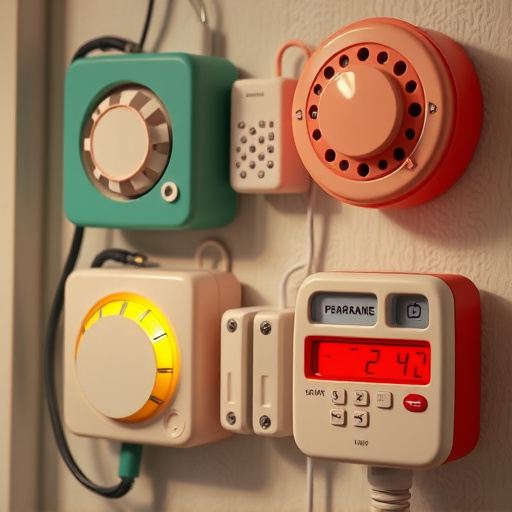Lone workers need specialized safety systems tailored to their isolation, featuring pocket-sized security alarms with easy activation, GPS tracking, automatic fall detection, and 2-way communication. Increasing adoption of these compact devices requires user-friendly features, regular maintenance, clear protocols, and a culture of safety awareness through training and feedback.
In today’s diverse workforce, lone workers face unique challenges. These individuals, often working remotely or unsupervised, require robust safety measures. Implementing Pocket-Sized Security Alarm Systems offers a revolutionary solution for enhancing their protection. This article delves into the essential needs of lone workers, explores the key features of these compact devices, and provides best practices for effective implementation. By understanding these aspects, organizations can ensure enhanced safety and peace of mind for their remote employees.
- Understanding the Needs of Lone Workers
- Key Features of Pocket-Sized Security Alarm Systems
- Implementation and Best Practices for Effective Use
Understanding the Needs of Lone Workers
Lone workers, by definition, operate independently and may face unique risks that are often overlooked in traditional work environments. Understanding their specific needs is crucial when designing safety alert systems. These individuals may require quick access to life-saving tools and communication methods, especially given their isolation. For instance, a pocket-sized security alarm featuring an easy-to-activate button and immediate connectivity to emergency services can provide much-needed reassurance.
Such devices should ideally be compact, durable, and user-friendly, ensuring that the lone worker can operate them effectively during emergencies without causing additional stress. Incorporating features like GPS tracking and automatic fall detection further enhances their safety, allowing supervisors or designated contacts to quickly locate and assist them if needed.
Key Features of Pocket-Sized Security Alarm Systems
The rise of lone workers in various industries has led to a growing demand for portable and accessible safety solutions, prompting innovations in pocket-sized security alarm systems. These compact devices are designed with multiple key features to ensure the well-being of individuals working alone. One of the primary advantages is their convenience; these alarms can easily fit into a pocket or attach to clothing, making them readily available when needed.
Key features include loud, piercing sirens that attract attention and alert nearby colleagues or emergency services in case of distress. Advanced models may also incorporate GPS tracking capabilities, enabling real-time location monitoring. Some devices offer two-way communication, allowing users to transmit alerts and receive support quickly. Additionally, automatic fall detection sensors are a game-changer, providing an extra layer of protection by triggering alarms if a worker experiences a sudden, unexpected fall.
Implementation and Best Practices for Effective Use
Implementing a safety alert system for lone workers is a proactive step towards ensuring their well-being and peace of mind. When selecting and integrating such a system, it’s crucial to consider user experience and accessibility. Opt for pocket-sized security alarm features that are not only compact but also intuitive to use, as these will be more likely adopted by the workforce. Train employees on how and when to activate these devices, ensuring they understand the benefits and their role in personal safety.
Best practices include regular maintenance and testing of the devices to ensure they function properly when needed. Additionally, establish clear communication protocols so that alert signals are promptly acknowledged and acted upon. Foster a culture of safety awareness where employees feel encouraged to report any issues with the system or suggest improvements, continually refining the process for maximum effectiveness.
Lone workers face unique challenges, but with the right pocket-sized security alarm systems, these risks can be significantly mitigated. By understanding their specific needs and implementing best practices for effective use, individuals operating alone in various environments can enhance their safety and peace of mind. The key features of these compact devices, such as immediate alert capabilities, long battery life, and water resistance, make them indispensable tools for navigating the challenges of working in isolation.
